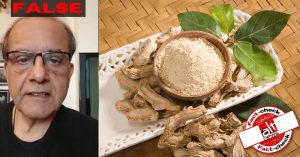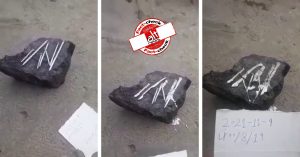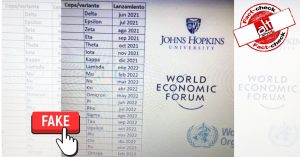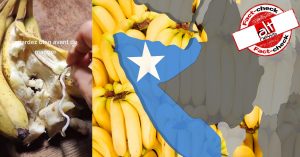The ministry of AYUSH observed the ‘Unani day’ on the 11th of February 2019 to raise awareness for the Unani branch of alternative medicine (alt-med) in India. In the AYUSH acronym, Unani represents the ‘U’ and ostensibly, an equal branch of the AYUSH systems. However, AYUSH heavily promotes other branches such as Ayurveda, Yoga, Homeopathy or Siddha, more than Unani.
The countdown begins! 50 days to go for Unani Day celebrations.
Adopt Unani System of Medicine, The Science of Health and Healing.#AYUSH#ZindagiRaheKhush#UnaniDay2019 #11Feb pic.twitter.com/5JnsSfmNdx
— Ministry of AYUSH (@moayush) December 22, 2018
Unani System of Medicine is a comprehensive medical system, which provides preventive, promotive, curative and rehabilitative healthcare.#AYUSH#ZindagiRaheKhush#UnaniDay2019 #11Feb pic.twitter.com/jGNlSdAeer
— Ministry of AYUSH (@moayush) December 28, 2018
Unani is an ancient treatment method brought to south-east Asia by the Mughals in the 13th century. Later, it was developed in India using the traditional knowledge of Indian and Chinese medicine.
In Unani, the treatment methods claim to focus on improvement of the bodily functions by removal of unwanted waste and thus, increasing its defence mechanisms. In addition to diet (Ilaj-Bil-Ghiza), pharmacotherapy (Ilaj-Bil-Dawa), and surgery (Ilaj-Bil-Yad), the therapies are regimented and are known as Ila’aj-Bil-Tadbeer which primarily consists of:
- Fasd: blood-letting using venesection,
- Ta’areeq: leech therapy,
- Kai: cauterisation,
- Hijaama: cupping or suction of skin using cups
Amongst the four mentioned above, the cupping therapy or Hijaama is widely used as a form of treatment for both acute and chronic ailments, especially in regions where Unani is the preferred form of treatment over Ayurveda, Siddha or homeopathy. Due to its higher practice by the Unani practitioners over other regimented therapies, people subscribing to Unani medicine are more likely to be adversely affected by cupping than its other physical external therapies.
In this article, we will discuss perceptions and falsely attributed claims of Unani and Cupping therapy:
- The origins of Unani
- The perception of a prescribed form of treatment in Islam
- The scientific evidence of efficacy with cupping
- The risks associated with cupping
- Conclusion
1. Unani is known to be distinctly Arabic and perceived to have no overlap with the ancient India treatments
Fact-Check: Unani has ancient Greek, Arabic, Persian, Chinese as well as Indian influences
According to Unani, the human body is made up of Arkan (Elements), Mizaj (Temperament), Akhlat (Humours), Aaza (Organs), Arwah (Spirits), Quwa (Faculties or Powers) and Afaal (Functions).
Here,
- Arkan is the four elements such as air, earth, fire and water derived from ancient Indian knowledge;
- Akhlat are the four humours of blood, phlegm, yellow bile and black bile derived from Hippocrates in Greece; and
- Arwah is the gaseous spirit (Ruh) that burns the Akhlat (Humours) to produce all kinds of Quwa (natural, psychic and vital powers) for a healthy function of the body- derived from the ancient Arabic wisdom.
Thus, the developed form of Unani after the 13th century in the Indian-subcontinent consisted of ancient Indian, Greek and Arabic knowledge of medicine.
Hippocrates (or Buqrat, 460BC- 370BC), the father of medicine from ancient Greece (Yunan), planted the idea for a rational and physical cause for diseases. Later, Greek physicians during the Roman period such as Galen (or Jalinoos, 129AD-200AD) developed it further. In the 4th century AD, the Greek medicine spread throughout Syria and was carried by the Nestorians into Persia, where it became available to the Islamic World. Later, it also derived knowledge from ancient China, where the exchange of Chinese herbs between 8th-13th century influenced Unani practice.
Hence, originating in ancient Greece or Yunan, Unani was developed from the teachings of philosophers such as Greek Hippocrates and Galen, Avicenna (Ibn Sina) and Muhammad ibn Zakariya al-Razi of ancient Persia, Chinese herbalists, and much later in India, by Hakim Abdul Hameed and Syed Zillur Rahman of India.
2. Unani is perceived to be the prescribed method of treatment in Islam from the time of the Prophet
Fact-Check: Unani, that is practised currently in India, had not been completely developed during the life of the Prophet. Also, it is likely that the Prophet may have recommended cupping through Islamic texts, not as a preferred treatment, but because it may be the only major treatment available at that period of time.
The ancient Egyptian texts suggest the existence of Unani practices such as Hijaama or cupping predating (1550 BC) the life of the Prophet. Thus, it was prevalent and possibly the only form of treatment before, during and much after the life the Prophet. Also, the mention of cupping is nowhere in the Qur’an but in ‘Hadiths’ that ‘strengthen’ each other. Hence, it is plausible, that the Prophet may have referred to it as a treatment method.
The form of Unani practised currently in India and the Indian subcontinent is merely a reflection of the journey it has undergone and the knowledge it has accumulated from the ancient Greeks, Persians, Arabs, Chinese and the traditional Indian systems of healing. Therefore, it is likely to be a variant from the primitive form of Unani practised during the life of the Prophet.
Hence, alluding Unani and its therapies such as ‘Cupping’ as the prescribed form of medicine in Islam may be only partially true.
Cupping therapy (CT)
Cupping is a method used for local evacuation/diversion of humours using cups attached to the surface of the skin which creates negative pressure. Cupping can be dry, with fire, or ‘wet’ – with small incisions to draw out blood.
On the website of the Ministry of AYUSH, it is suggested that cupping can be used for
- Cleaning the skin of waste matters.
- To stop excessive menses or epistaxis.
- To correct liver diseases.
- To treat malaria and spleen disorders.
- To treat piles, inflammation of testes and uterus, scabies, boils etc.
Using the modern knowledge of physiology, cupping is justified as a means to help supposedly helps with pain, inflammation, blood flow and provides deep-tissue massage by relaxing them.
3. Cupping is effective as a treatment
There is no scientific evidence that cupping therapy can prevent bleeding, correct liver and spleen diseases, treat malaria or any other infections or treat inflammation. By using sheer negative force or pulling of the skin, cupping may remove external, dry skin scabs but it may not be the safest or effective method to remove scabs.
Several research studies have reported elaborate benefits of cupping therapy. A recent review article by researchers in Saudi Arabia collated studies that highlighted these benefits as “Reported effects of cupping therapy include promotion of the skin’s blood flow, changing of the skin’s biomechanical properties, increasing pain thresholds, improving local anaerobic metabolism, reducing inflammation, and modulation of the cellular immune system.”
However, systematically reviewing the studies suggest that these studies contain highly biased conclusions.
3.1. Claim: Cupping increases blood flow
Fact-Check: While it is true that the pressure due to cupping increases blood flow to the surface and changes skin’s biomechanical properties. There is no evidence that these effects can be beneficial in the short term over the local injury, inflammation or burns the therapy is known to cause.
3.2. Claim: Cupping improves anaerobic metabolism, reducing inflammation and modulation of the immune system and thereby, reducing illnesses
Fact-Check: Increasing anaerobic metabolism may lead to an increase in metabolic acidosis (body accumulating excessive amounts of acid) which can cause an increase in pain. The study suggesting reduced inflammation after cupping measured a change in plasma cortisol level (a hormonal marker for stress and low blood glucose), which is a variable throughout the day and is manipulated by several other factors such as food intake. There is no evidence in that study that cortisol is manipulated by cupping only. Also, the study that linked modulation of the immune system measured a change in WBC (white blood cells), which is also indicates infection or inflammation.
Hence, none of the above changes suggests that they could be used as an indicator of health improvement, but increases in WBC can be a function of immune system problems such as infections.
3.3. Claim: Cupping reduces chronic pain
Fact-Check: Several studies (Chi et al. 2016, Kim et al. 2012 & many more) have suggested that cupping therapy can reduce long-lasting chronic pain. Pain is a subjective experience and is highly modulated by the patient’s expectations of treatments.
Hence alternative therapies show significant efficacy in pain conditions, many of which are effective by placebo analgesia.
Since, the studies indicating a positive effect on pain lack any form of blinding from the patient’s part, it is highly likely that those effects may have been due to raised expectations. Additionally, these studies have a low sample size, high bias for a positive result and lack of international standards of research. These studies lack the scientific credibility to suggest cupping may have had a mechanistic effect on chronic pain.
More systematic literature reviews and meta-analyses (Cao et al. 2012, Cao et al 2010, & Lee et al. 2011) also indicate that cupping therapy has no evidence whatsoever in treating chronic illnesses.
4. Cupping entails no adverse effects
Fact-Check: While experts claim that cupping therapy has no adverse reactions, several side-effects such as viral infections, local injury, inflammation and pain due to bruising have been reported.
Kim et al. 2014 reported from 16 studies conducted in Korea that linked anaemia (due to blood loss in wet cupping), local tissue injury (due to suction pressure), and herpes viral infection (due to skin lacerations in wet cupping).
Another study reported the possibility of a haemorrhagic stroke due to elevated blood pressure in the cervical area.
In cases of cupping with heat or fire, several burn injuries are prevalent with some requiring hospitalisation and skin grafting due to burns.
Conclusions
The understanding of the human body is perpetually updating with novel information. It is counterproductive to use ancient medical practice that is maladaptive in the modern context. It is more dangerous to do so when those practices are entrenched in religious belief systems. The treatment system of Unani and its treatment of cupping is one such example.
It is possible that the Prophet may have recommended it (as suggested by Hadiths) being the only form of modern medical practice during the life of the Prophet, but it is dangerous to suggest that it is the only prescribed form in Islam. This attribution can make more people relying inclusively on it without understanding the mechanism of its efficacy.
Moreover, the specific practice of cupping has no clinical evidence as a treatment method for any of the claims made by AYUSH or the research literature. The studies that concluded with positive results had a ‘high bias’ risk, included limited sample size, conducted with no degree of blindness, were without international research standards, and hence lacked credibility. As opposed to treating patients, cupping therapy exposes patients to infections, burns, inflammation and severe tissue injuries.
Independent journalism that speaks truth to power and is free of corporate and political control is possible only when people start contributing towards the same. Please consider donating towards this endeavour to fight fake news and misinformation.




